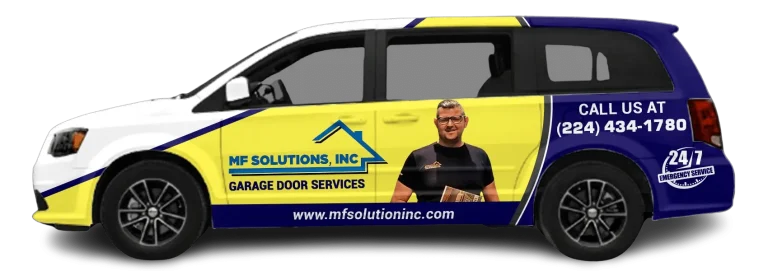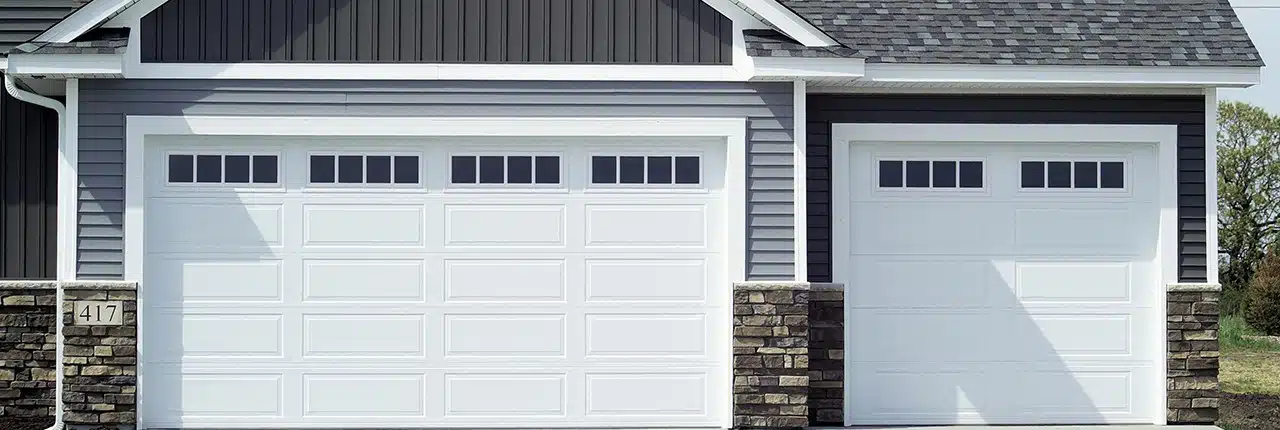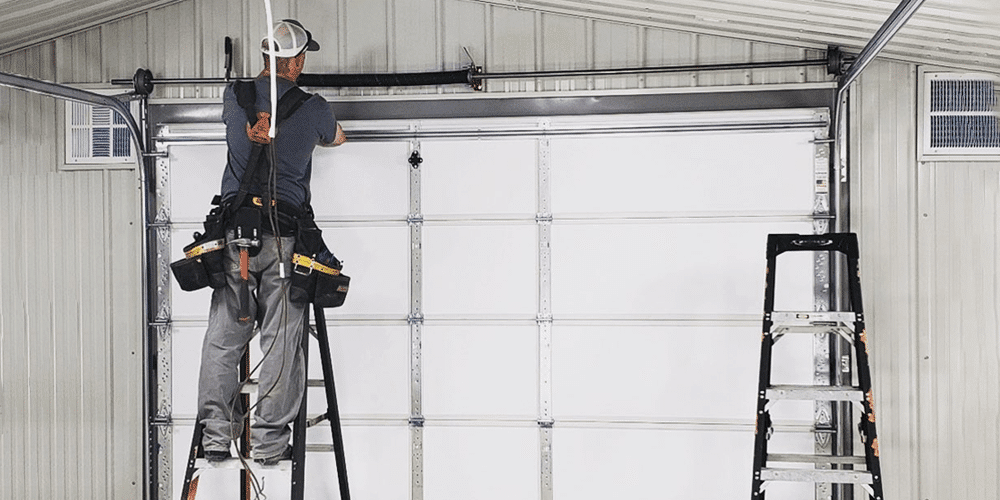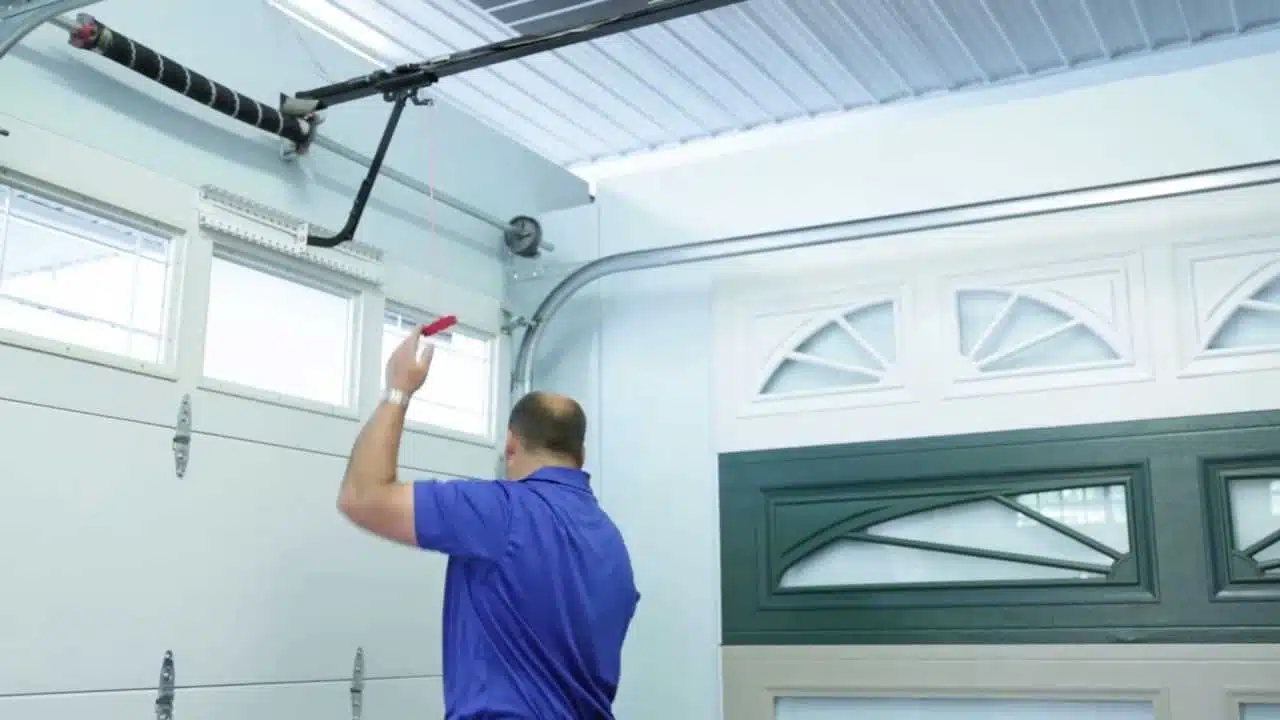Explore different garage door overlay materials, design styles, and expert installation tips to achieve a customized look that enhances your property’s appearance.
A well-designed garage door can greatly improve the exterior appeal of a home or building. One of the most effective ways to achieve a personalized and upscale appearance is by adding a garage door overlay. Overlays provide an additional layer of style and texture, transforming standard garage doors into visually striking elements of architectural design.
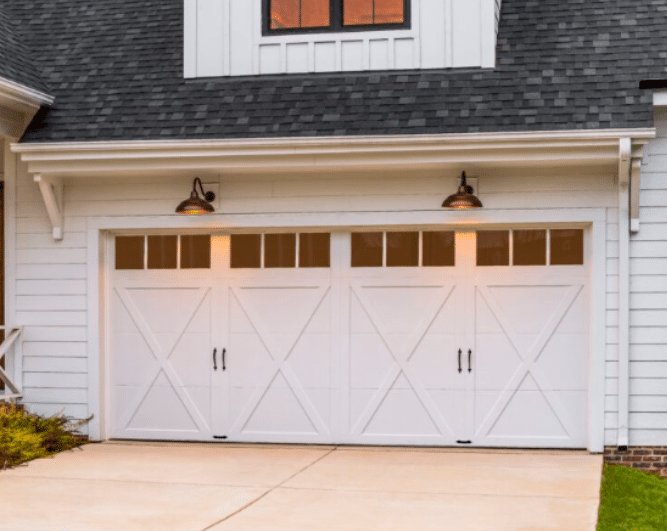
Whether you’re aiming for a modern, rustic, or traditional aesthetic, garage door overlays offer design flexibility that suits a variety of preferences. They can be made from several different materials, each with distinct visual and functional benefits. Understanding your options helps you create a cohesive exterior that matches your home’s style and enhances overall property value.
This guide explores the most common materials used in garage door overlays, discusses the popular styles available, and offers practical tips for achieving a clean and lasting installation.
What Is a Garage Door Overlay?
Basic Concept and Function
A garage door overlay is a decorative layer applied to the surface of an existing garage door. Unlike replacement doors, overlays are used to enhance the visual appearance without changing the core structure or mechanics. These overlays can be installed during new construction or as part of a renovation project to upgrade outdated or plain garage door panels.
Why Homeowners Choose Overlays
- Adds custom style without full door replacement
- Allows blending or contrast with architectural elements
- Increases curb-side visual value and resale appeal
- Can be made from a variety of materials for different looks and performance needs
Popular Materials Used in Garage Door Overlays
Wood Overlay Panels
Wood overlays remain a favorite for homeowners seeking a warm, traditional look. Available in real or engineered varieties, wood adds natural texture and depth. Cedar, redwood, and plywood composites are commonly used. Wood overlays often require sealing or painting to protect against moisture and UV exposure.
Steel Overlay Designs
Steel garage door overlays provide durability and strength. These are ideal for homeowners who want a more industrial or contemporary design. Steel can be powder-coated in various finishes and resists dents better than wood. They’re low-maintenance and work well in areas with extreme temperature changes.
PVC and Composite Materials
PVC and synthetic composites offer a lightweight and moisture-resistant alternative. These overlays mimic the look of wood without the ongoing upkeep. They’re a practical choice for coastal areas or regions with high humidity. Additionally, they can be painted or textured to fit different styles.
Aluminum and Glass Options
For ultra-modern homes, overlays that combine aluminum frames with frosted or tinted glass panels offer a sleek, minimalist look. These overlays allow light into the garage while maintaining privacy. They are often used in contemporary architecture and upscale urban residences.
Design Styles for Garage Door Overlays
Carriage House Style
Inspired by vintage carriage doors, this style adds charm and classical appeal. Features include vertical boards, cross beams, and decorative hardware. It’s especially popular in craftsman, colonial, and farmhouse-style homes.
Modern Flush and Minimalist
Flush overlays with clean lines and smooth surfaces complement contemporary or mid-century modern designs. These styles focus on simplicity and precision, often using monochromatic color schemes and minimal detail.
Rustic Barn-Inspired Looks
Rustic overlays use wood grain textures, metal straps, and bold hardware to mimic barn doors. This style pairs well with stone or natural siding materials and brings a handcrafted appearance to the exterior.
Custom Architectural Matching
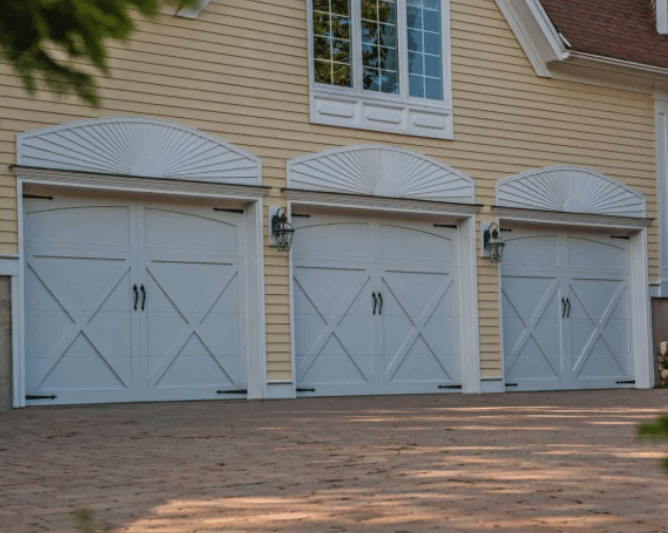
Some overlays are custom-built to reflect specific architectural features of the home. This may include matching window shapes, paint colors, or siding patterns. These overlays are often developed in collaboration with design professionals.
Installation Tips for Garage Door Overlays
Adding an overlay to your garage door is a great way to elevate its appearance, mimic custom wood designs, or achieve a specific architectural style without replacing the entire door. Proper installation is key to ensuring lasting performance and a high-end finish.
Surface Preparation
Before applying any overlay, the garage door surface must be properly prepared. This step is crucial for achieving strong adhesion and a smooth, flawless finish.
- Clean Thoroughly – Remove all dirt, dust, oil, and residue using a mild cleaner or degreaser. A clean surface ensures the adhesive bonds effectively.
- Repair Damage – Address any dents, cracks, rust, or peeling paint. Sand down uneven areas and apply primer or filler as needed.
- Dry Completely – Ensure the door is fully dry before beginning installation to prevent moisture from weakening the bond between the overlay and the door.
Skipping proper surface preparation can lead to bubbles, lifting, or premature failure of the overlay material.
Measuring and Alignment
Precision is essential during the planning and installation phase to ensure the overlay fits and functions properly.
- Take Exact Measurements – Measure both the width and height of each door panel, as well as the spacing for hinges, handles, and other hardware.
- Mark Placement – Use a pencil or masking tape to outline the placement of each overlay piece. Dry-fit pieces before applying adhesive to confirm alignment.
- Maintain Clearance – Make sure overlay panels do not interfere with the door’s movement, folding sections, or tracks. Even minor misalignment can cause operational issues or excess wear.
Fastening and Adhesion
Choosing the correct installation method depends on the overlay material and the base door’s composition.
- Wood or Composite Overlays – Typically attached using exterior-grade screws, nails, or rivets. Pre-drilling is recommended to prevent cracking.
- PVC or Vinyl Overlays – Often installed with industrial-strength adhesive or tape designed for outdoor use. Be sure to press firmly and evenly across the entire surface.
- Follow Manufacturer Guidelines – Each product has specific installation requirements. Always refer to the manufacturer’s instructions for best results and to maintain warranty coverage.
Proper fastening ensures the overlay remains secure through weather changes and daily operation.
Professional vs. DIY Installation
While overlay kits are marketed for DIY use, professional installation offers significant advantages:
- Precise Fit and Finish – Installers ensure clean lines, symmetrical placement, and flawless movement.
- Time-Saving – Professionals complete the job quickly and efficiently, avoiding common DIY mistakes.
- Warranty Protection – Many overlay systems require professional installation to ensure product warranties are valid.
- Customization Support – Experts can recommend overlay materials, patterns, and finishes that match your home’s style and climate conditions.
If your goal is long-term durability and premium appearance, hiring a trained installer is often worth the investment.
Frequently Asked Questions
What is the purpose of a garage door overlay?
A garage door overlay is used to improve the appearance of an existing door by adding decorative panels or trim without replacing the entire door.
Are garage door overlays weather-resistant?
Yes, many materials, such as steel, PVC, and treated wood, are designed to withstand weather exposure. Maintenance levels vary depending on the material chosen.
Can overlays be added to insulated garage doors?
Absolutely. Overlays can be installed over insulated doors as long as the structural integrity and operation of the door remain unaffected.
How long do garage door overlays last?
Lifespan depends on the material and installation quality. PVC and steel overlays can last 10–20 years with minimal maintenance, while wood may require more frequent care.
Do overlays affect the weight of the garage door?
Yes, overlays can add weight. It’s important to have the spring system evaluated after installation to ensure the door operates safely.
Conclusion
Garage door overlays offer a versatile and effective way to upgrade the appearance of your garage without replacing the entire door. With a range of materials and design styles available, they allow homeowners to achieve a customized look that complements their property.
Whether you’re looking for a classic carriage design or a sleek, modern aesthetic, overlays provide the flexibility and durability needed to enhance curb appeal. Understanding the materials and installation process ensures a lasting and visually pleasing result.
For best outcomes, consider consulting with professionals who specialize in garage door enhancements. Their expertise ensures that your overlay not only looks great but functions safely and efficiently.
End Note
MF Solutions, Inc. in Buffalo Grove, IL, is here to handle all your garage door needs. Whether you need a garage door replacement to improve the look and security of your home or garage door panel repairs, we provide reliable and professional services. Our team ensures each job is done right, making sure your garage door is safe and functional.
Regular maintenance is key to keeping your garage door functioning properly. Our garage door maintenance services help prevent future problems, saving you money on costly repairs. With our expert team, you can trust that your garage door will run smoothly for years.
For more information or to schedule a service, please don’t hesitate to contact us. We’re here to answer your questions and provide the best garage door solutions in Buffalo Grove, IL.
MF Solutions
302 Cherrywood Rd, Buffalo Grove, IL 60089, United States
+16304737300

